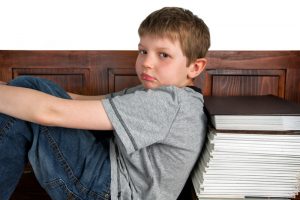 According to the latest statistics (from 2016) from the Centers for Disease Control and Prevention (CDC), it is estimated that 9.4% of children have received a diagnosis of ADHD. The acronym, which stands for Attention-Deficit/Hyperactivity Disorder, includes three sub-types: the inattentive type (known as ADD, for Attention Deficit Disorder, until 1987), the hyperactive-impulsive type, and the combined type, which is most often diagnosed, including symptoms of impulsivity as well as inattention.
According to the latest statistics (from 2016) from the Centers for Disease Control and Prevention (CDC), it is estimated that 9.4% of children have received a diagnosis of ADHD. The acronym, which stands for Attention-Deficit/Hyperactivity Disorder, includes three sub-types: the inattentive type (known as ADD, for Attention Deficit Disorder, until 1987), the hyperactive-impulsive type, and the combined type, which is most often diagnosed, including symptoms of impulsivity as well as inattention.
As with autism spectrum disorder (ASD), ADHD is more commonly diagnosed in boys, likely for similar reasons of externalizing versus internalizing behavior. It is most commonly diagnosed in elementary schools, though parents can observe symptoms and behaviors as early as preschool, and many times an accurate diagnosis is not procured until adulthood due to workarounds, accommodations, and supports that may have masked the difficulties in childhood and adolescence.
ADHD is considered a medical condition, as well as a behavioral health or mental health condition. Therefore, while primary care providers and pediatricians are able to diagnose based upon parent or teacher report (and a report from multiple settings is considered best practice, as ADHD must present in at least two different settings in order to be diagnosed), a psychologist or neuropsychologist is able to directly test the executive function system. These psychological evaluations include tasks of sustained attention, tasks of inhibiting an impulse, tasks of sorting and organization, and the ability to anticipate consequences and quickly switch between tasks, among other skills. Checklists can’t tell us all of that!
The American Academy of Pediatricians (AAP) recommends starting with evidence based behavioral therapy, particularly for younger children (younger than 6), and adding a stimulant type of medication should behavioral therapy alone be ineffective for children over the age of 6. The combination of behavioral therapy and medication is considered most effective.
As every parent with a child with ADHD knows, the routines, supports, and strategies are as valuable as medication, if not more. Kids with ADHD may struggle more in the mornings, when they are tired and their executive function system is still activating – for these kids get as much done as you can at night. Pack lunches, set backpacks by the door, and set out clothes for the next day. Do as much as you can to streamline the process, as kids with ADHD may get lost with extra steps.
At school, organization is key – and for kids with ADHD, it needs to be an organization that makes sense to them. For younger kids, who might need to be taught organizational skills, have them organize backpacks and materials with you. Let them have an input on how they would like their supplies. For older kids, resist the urge to organize for them. Natural consequences are a powerful teacher, and while your teen may come to you for help, it is their life to organize.
Accommodations at school can be incredibly meaningful for kids with ADHD. Frequent breaks and chance for movement and fidgeting (and fidgeting actually helps kids with ADHD focus), extra time and reduced distractions on tests, breaking multi-step directions down into smaller steps, or provided in a visual format are all easy supports to offer at school that can make a world of difference to a child with an executive functioning difference.
There are also numerous strengths that accompany an ADHD diagnosis. The ability to hyperfocus, or immerse oneself into an interest and block out distractions, is one such strength. Creativity, a willingness to take (relatively safe) risks, and a sense of humor are among the many strengths found along the ADHD spectrum.
ADHD is one of the more common disorders, usually diagnosed in childhood. A proper diagnosis, along with appropriate strategies and support, can help kids with ADHD thrive!
